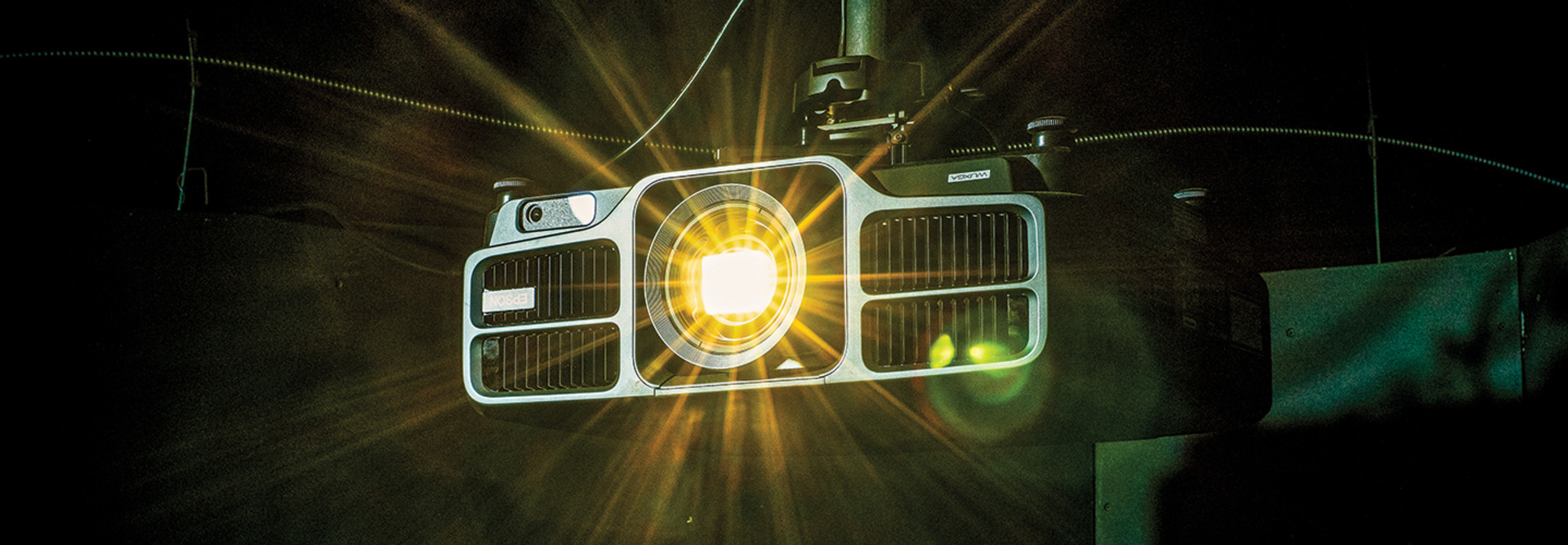Video was the perfect way to get 3trees Church’s pastor in front of more congregants on Sundays, says Jaron Burkhardt, the church’s Worship Pastor and Technical Director.
“The clarity and ultra-high resolution for large images enables the content to be visible at a distance,” Seshadri says. “Video walls can be used as a billboard, or to display product information, demonstrations or announcements, or they can be used at various live events and much more. Businesses use video walls to attract customers and for brand reinforcement — the high-quality visuals appeal to the audience.”
As a result, following several years of steady growth, the digital signage market — which encompasses video walls, projectors and other types of display technology — is predicted to rise from $18.55 billion to more than $31 billion by 2025, according to a May 2019 Grand View Research report.
Beyond just providing information, some businesses are starting to use video displays to deliver immersive and interactive experiences as near-field communication and other functionality have begun appearing in new products.
“Interactive content can provide an immersive experience, and with thin-bezel and lightweight versions, brands will adopt creative ways to use video walls,” Seshadri says. “With growing applications, their popularity is expected to increase in the near future.”

Video Enables Immersive Experiences
Electronics retailer B&H Photo Video was impressed enough with the ability of video walls to deliver immersive experiences that it is using one at its Manhattan store in New York City to show customers what it’s like to fly drones, replacing the cage it had been using for actual test flights, says Senior Technologist Mark Steinberg. The NEC wall’s 1920x1080 native resolution provides a bright, realistic picture that’s helped B&H showcase drone uses in a more effective way, Steinberg says, than it could have before.
“It’s almost like standing in front of a big picture window,” he says. “Customers really do connect to it in a way that feels safe. In a drone cage, you can have something coming right at you, and that can be a little unnerving.”
In addition to providing a virtual experience, the wow factor of large digital displays can help businesses direct attention toward specific product areas, instructional information or other elements, and may help further public relations and marketing efforts.
“You want to grab any eyeball as soon as you can, because you’re trying to get people to act based on the content you’re showing them,” says Jerry Harris, senior director of creative services at the Georgia Aquarium in Atlanta. “One 45-inch screen 30 feet away doesn’t really do it, but a 30-foot-by-30-foot video wall grabs your attention.”
The aquarium installed a video wall when it needed to relocate animals from a large tank in its front entrance area due to construction. More than two dozen 55-inch LG HD displays were joined using a custom-made frame and situated in the drained and cleaned tank, playing prerecorded footage of tropical fish in their natural habitat on a continuous loop.
“We ended up adding screens to replace the live animals so we could maintain a level of quality, from a visual standpoint, and not just have large acrylic windows with nothing in them,” Harris says. “People were taking pictures and putting them on Facebook. When people tweet or send Snapchats, you hope somebody says, ‘Oh that's cool, let’s go see it.’”













